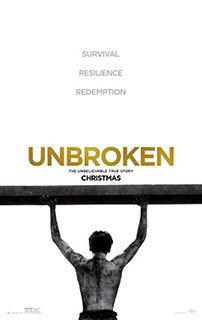“Unbroken”suffers from the same problem as countless other Hollywood biopics: It’s too watered down. Despite strong performances and a number of sharply executed scenes, the fact that it leaves so much out of the real story makes it a missed opportunity.
Based on the book by Laura Hillenbrand, the movie adaptation chronicles the life of Olympic athlete turned World War II pilot Louis Zamperini (Jack O’Connell) and his incredible story of survival. After his plane crashes and he and two of his men spend 47 days at sea, Zamperini is captured by Japanese forces and remains a prisoner of war for the next two years.
With the exception of a few flashbacks from his childhood and the scenes where he’s stranded at sea, the bulk of the film showcases the torture Zamperini endures under the sadistic Japanese officer Watanabe (Takamasa Ishihara). These scenes are brutal, prolonged, and with a little more blood and realism would have garnered an R rating for the film.
The exposition is definitely the weakest part of the movie. Zamperini’s brother is unfortunately made into more of a caricature whose only purpose is to spit out philosophical advice which inspires Louis. Even with a script co-written by the Coen brothers, these scenes are rushed and underdeveloped, making it difficult to really pinpoint Zamperini’s motivations for surviving.
Angelina Jolie steps into the director’s chair for the third time, proving she has what it takes to create a visually aesthetic experience. This is also thanks to the work of Oscar-nominated cinematographer Roger Deakins (“No Country for Old Men,” “Skyfall”).Opening with the heart-pounding plane crash sequence, Jolie quickly establishes the film’s level of intensity and gritty tone.
Dim lighting and close-ups of beatings make viewers all the more sympathetic toward Zamperini and every other prisoner under Watanabe’s captivity. It’s essential that we see these scenes in order to begin to grasp what this man suffered.
However, Jolie’s approach is far too narrow and prevents the movie from capturing the real heart of Zamperini’s story. While the book delves into themes of redemption and faith, which are crucial elements of this man’s life, the film focuses solely on his endurance.
Nevertheless, both O’Connell and Ishihara deliver knockout performances. Moments where Watanabe (nicknamed “The Bird”) gets right in Zamperini’s face terrify viewers even more than when he beats his prisoner within an inch of his life. Ishihara’s demeanor and physicality give him a powerful screen presence and capture The Bird’s relentless sadism.
Likewise, O’Connell is sure to acquire a number of roles in the future. Despite the script not giving his character strong motivations, his performance is enough to make audiences desperately want to see Zamperini make it out alive.
There are one-note films that work. War movies such as “Black Hawk Down”and “Lone Survivor”focus solely on the brutality of military combat and the brotherhood that develops through it, and rightfully so.
But with “Unbroken,” there’s so much more to tell than simply the hell Zamperini endured. The film simply condenses Zamperini’s emotional toll to a post-script during the credits.
Had the filmmakers really wanted to tell the full story of Zamperini and not just popped out a dramatic blockbuster in time for Oscar season, something like an HBO miniseries would’ve been a superior medium.
If anyone wants to learn about the depth of faith that Zamperini carried and his own redemption through forgiveness of his captors, he or she should pick up Hillenbrand’s book, because the movie doesn’t do his life justice.








